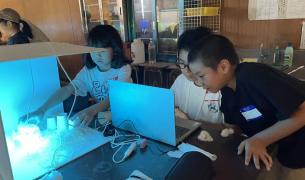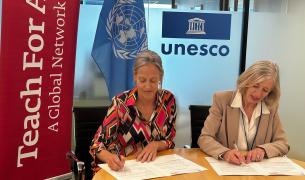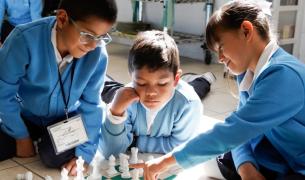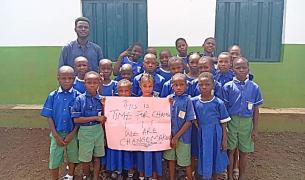Fostering Connectivity by Phone: Ensina Brasil’s “Good Calling” Bridges the Distance Between Teachers and Students
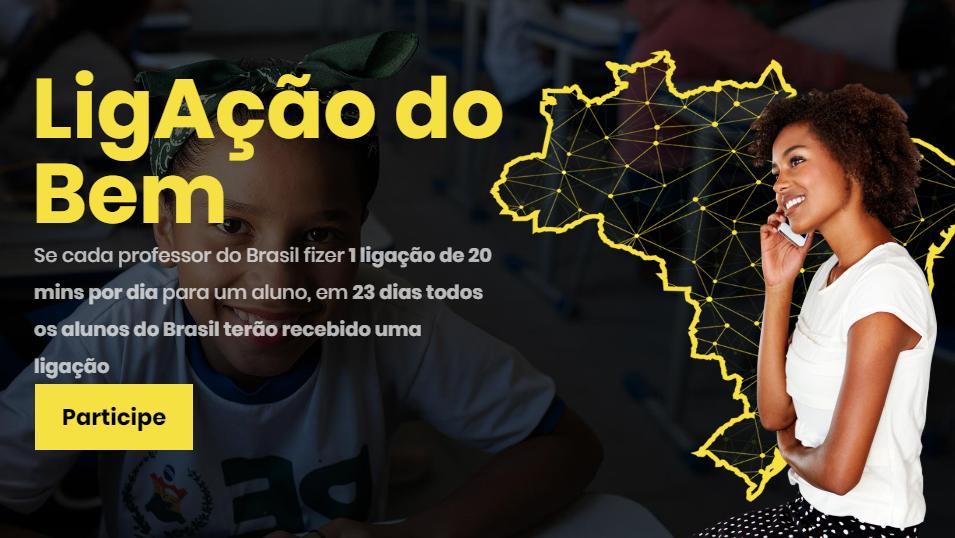
When schools closed in Brazil due to the coronavirus pandemic, Ensina Brasil’s staff and teachers asked themselves what they could do to make the period of isolation different—and better—for their students. In late March, more than 130 Ensina Brasil teachers held a “hackathon” to surface ideas for actions they could take or initiatives they could develop. The hackathon produced ideas for more than a dozen potential projects, from which the participants chose two to pilot. One of those projects, Ligação do Bem (“Good Calling”) has been so successful that Ensina Brasil is hoping to expand it across the country, to all public school students and teachers in Brazil.
The idea for Ligação do Bem emerged when a group of teachers looked at both the current educational context and the likely post-pandemic outcomes for their students. During the isolation period, communication between families and schools was challenging, both students and teachers were disconnected from each other and their peers, and teachers were working countless hours to produce digital content, despite having little experience with virtual learning. Looking ahead, the Ensina Brasil teachers feared that their students, the majority of whom live in marginalized communities, would fall even further behind—the disconnection between students and school was growing every day, the learning gap was increasing, and the likelihood was growing that some students from low-income families would have to drop out of school to work.
The teachers decided to focus on reestablishing and strengthening the connection between themselves and their students, despite the physical distance between them. They determined that one-on-one phone calls would foster connection by humanizing the teacher-student relationship, increase students’ sense of belonging and being heard, and make students feel valued and cared for—all of which may reduce the chances of students dropping out when school resumes.
With support from education specialists, the Ligação do Bem team developed a detailed protocol for the initiative, and produced a manual with guidance on everything from the optimal call length (20 minutes), to how to invite students to the calls, to what to do if teachers are concerned about a student’s physical or emotional wellbeing. The protocol emphasizes that the content of the calls should not be about academics, nor should they be seen as therapeutic (as the teachers are not trained therapists). Instead, the guidance includes six suggested topics—maintaining a routine, staying healthy and active, leadership and self-advocacy, family and relationships, hobbies, and awareness—as well as questions to help keep the conversation going.
Ten teachers and 50 students participated in the Ligação do Bem pilot, and the results were overwhelmingly positive. Feedback from students and educators revealed that both groups felt the calls deepened their connection. “Ligação do Bem reminded me how happy I am when I'm in class,” shared Lauriane Madeira, a teacher. “It made me understand that the students are also missing the contact we have during our classes.” Other teachers offered similar responses, as did their students. “Teacher, can you also call my friend Bruna?” a student from Cariacica asked. “She’s going to love talking to you!”
The pilot has been so successful that Ensina Brasil has plans to expand it beyond the organization’s own teachers and students. Given that 92% of Brazilian households have at least one cell phone, and four out of five children 10 years old or older have a phone of their own, the team believes Ligação do Bem has the potential to reach millions of educators and children across the country. They’re currently in the process of cultivating the partnerships and funding sources necessary to expand Ligação do Bem nationwide, and they’re hopeful that the “simple action” they developed will have a deep impact now and in the future.
Learn more about Ligação do Bem
